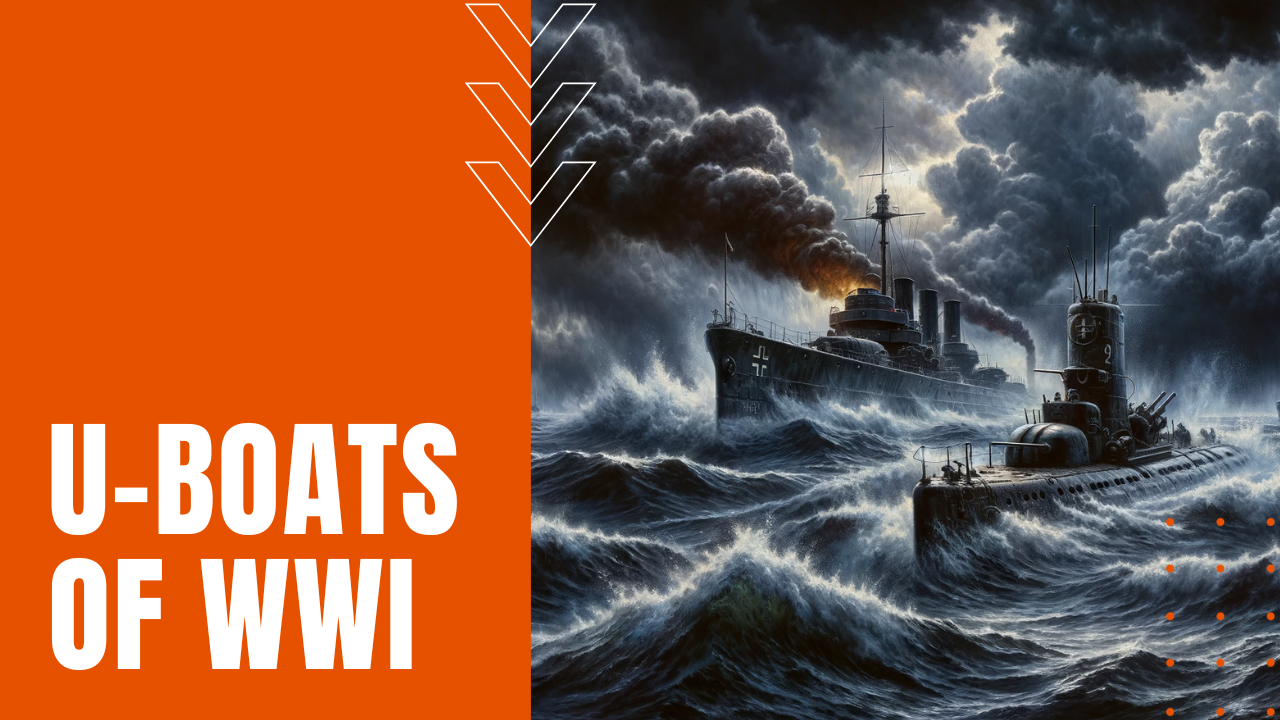U boats of WWI

Sinking some 5,000 merchant ships at a cost of an approximate 15,000 Allied lives, Germany’s formidable U-boat fleet nearly brought Great Britain to her knees during the bloody years of the First World War. An abbreviation for the German word “Unterseeboot,” U-boats prowled international shipping lanes primarily in the North Atlantic, beginning with 20 combat-ready U-boats at the start of the war, drawing first blood on September 5th, 1914 when a U-boat sank a British light cruiser off the coast of Scotland, taking the lives of more than 250 sailors.
Bloodbath Continues
Seventeen days later, another U-boat sank three British battle cruisers over the course of an hour, this time taking the lives of 1,500 men. Announcing in February of 1915 that German and Austro-Hungarian U-boats would commence unrestricted warfare on all vessels, including merchant ships from neutral countries, on May 7th of that same, U-20 torpedoed the luxury liner Lusitania off the coast of Ireland, taking the lives of nearly 1,200 innocent passengers. Fearing the sinking would hasten the United States’ entry into the war, Germany eventually promised to protect the lives of passengers before sinking unarmed ships at sea.
The Birth of Convoys
To counter the U-boat threat to maritime trade, merchant ships formed convoys to cross the Atlantic, while Allied naval forces employed Q-ships, which were life like decoys designed to draw U-boats into unsuspecting traps for ambush and destruction. Dimly lit and claustrophobic, 50-man U-boat crews shared two toilets and rarely showered or changed clothes during patrols as long as two months at sea. Inhaling foul cocktails of bilge water, sweat and noxious diesel fumes, mildew grew on their shoes, while charts simply rotted away in oppressive heat and humidity.
Nowhere Off Limits
Longer range U-cruiser submarines even reached American waters by late in the war, where in May of 1918, the first German U-boat to reach North America sank 13 ships off the coast of Florida, including six in a single day, prompting Congress and the Army Corp of Engineers to develop the Intercostal Waterway in 1924, for the protection of ships in the event of future world wars, making U-boats of the First World War, some of the most lethal weapons in the history of human warfare.
